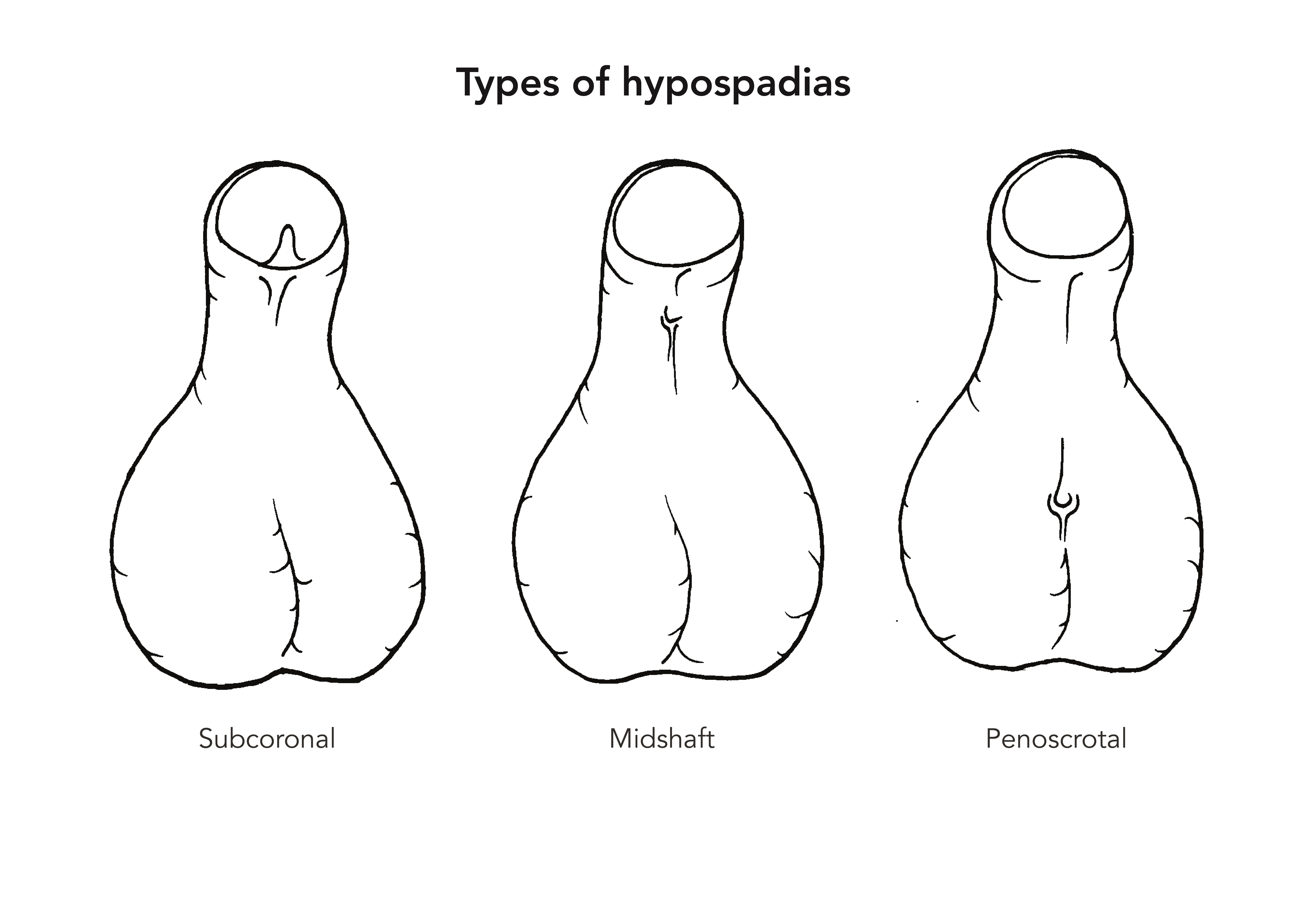Hypospadias
Hypospadias
What is Hypospadias?
Hypospadias is a common congenital (present at birth) condition affecting a boy’s penis. It is a combination of three separate problems:
• the hole through which urine passes (meatus) is not at the tip of the penis
• the foreskin is gathered at the back of the penis with none at the front
• the penis may be bent when erect
The position of the meatus varies. In some boys, the hole is only a small distance away from the tip of their penis, whereas for others, it is at the base of their penis, in their scrotum or behind their scrotum. Hypospadias affects around every 1 in 300 boys, and these boys might have associated conditions such as undescended testes or inguinal hernia. In most cases, it is an isolated condition. It is not known what causes the condition but appears to be commoner in some families.

How is it diagnosed?
Hypospadias is usually diagnosed by clinical evaluation of the appearance of the penis. This can happen during a routine physical examination after your son is born or during a regular check-up when your son is a few months old.
How is it treated?
Some hypospadias abnormalities are so minor that no treatment is needed. However, for most boys, hypospadias is treated with surgery. The type of surgery your son will need will depend on the severity of their condition. The aim of the surgery is to reposition the hole through which urine passes (meatus) to the tip of the penis and to correct any bending when the penis is erect.
Although hypospadias may not cause any immediate problems for your son, if the condition is not
treated, when they are older they may be unable to:
• pass urine (wee) standing up
• have an adequate erection
• have sex without difficulty
Surgery is usually performed when your son is aged six to 12 months. Most forms of hypospadias can be corrected in a single surgery. However, some forms of hypospadias will require more than one surgery to correct the condition.
For more information click here
